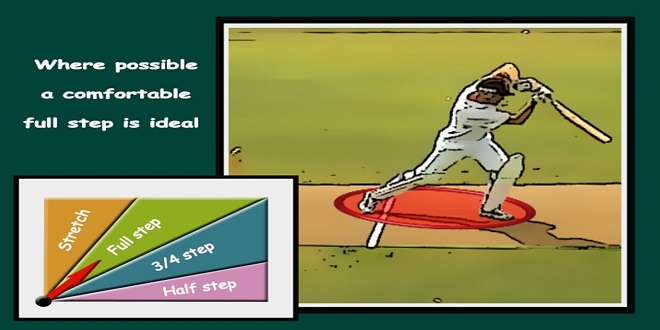Honing Your Batting Skills

Starting Out in the Middle
Even at the best of times, cricket is hardly a fast game. Arriving at the wicket, before facing the first delivery, you have to go through some preliminaries with the umpire standing at the bowler’s end of the pitch. These goings-on May all seem like a bit of a rigmarole but it’s all done for good reasons.
Taking guard
You hold your bat vertically and ask the umpire which stump is covered. After hearing the answer you then tell the umpire which stumps you want your bat to be in front of. The umpire then guides you to the position you requested by instructing you to move your bat towards you or away from you. This position is called your guard. Once you have been guided to your guard, you should make a dent in the crease by hitting it with the bat. The crease is the white line four feet in front of the line passing through the stumps (also the marker for the batsman to complete a run). See Chapter 2 for more on creases. Making a dent isn’t about vandalizing the pitch. You make a dent so you can easily return your bat to the same spot to take guard ball after ball and therefore not annoy the umpire by asking to retake your guard all the time.
Gripping stuff
You hold a cricket bat with both hands. If, like most players, you are right-handed, your top hand, the hand nearest to the top of the handle, is your left hand. This means that when you stand in the side-on position that most batsmen use, your left shoulder faces the bowler. Your right hand is your bottom hand because it is closest to the bottom of the bat handle. The right side of your body faces the stumps and the wicket-keeper. The opposite applies to left-handers.
The natural inclination standing in this initially somewhat unfamiliar position will be to let your ‘top’ or left hand if you’re a right-hander, turn anti-clockwise away from you. Resist this. It is important that your ‘bottom’ or right-hand remains in the ‘V’ of your top hand and both ‘Vs’ continue to face down the back of the bat. Some coaches recommend that the ‘Vs’ form a line pointing fractionally towards the front half of the bat but this is only a very minor change of direction.
Listening to the umpire
A right-handed player bowling over the wicket delivers the ball from the umpire’s left – the right-hand side of the stumps as the batsman looks at it. A right-handed player bowling round the wicket delivers the ball from the right-hand side of the umpire and the stumps. For left-handed bowlers what constitutes over or around the wicket is reversed.
Setting the sight screens
Taking in all the above info, you should now check the position of the sightscreens (if there are any). The sight screens are large wooden screens – a few meters high and wide and painted white. The screens are mounted on wheels so they can be moved easily and are meant to be located directly behind where the bowler will be releasing the ball. If you are not happy with where the sight screens are you can ask for them to be moved so that they are directly behind where the bowler will be releasing the ball – and the fielding side will oblige by moving the sightscreen, which is nice!
Facing up to the bowler: Stance
The idea is that the batsman’s body and hands should be in the best possible position to execute a shot once the ball has been delivered. The best batsmen like to have their weight evenly distributed in the stance between their right and left leg. Keeping the head still is also considered key in the stance as this allows both eyes to point directly down the wicket at the bowler – allowing the optimum field of vision. Don’t tilt your head – make sure your eyes are level.
Last word
The backlit is the movement made with the hands by the batsman to propel the boat towards the ball. In order to get power and timing into the shot, the aim is to lift the bat behind the back – preferably in line with the off stump and perhaps even head-high – so that the bat comes back down in a pendulum motion to meet the ball when it arrives.




